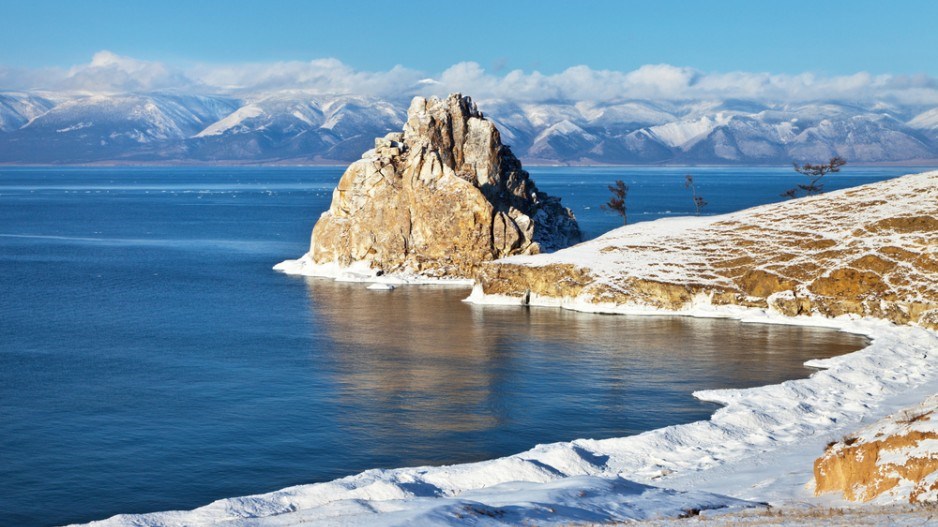Buried deep along the continental shelves of many of the world’s oceans is an intriguing, recently uncovered hydrocarbon source: methane hydrates.
Although the full extent of these deposits is unknown, preliminary estimates suggest they could represent a 200-to-1,000-year global supply of natural gas. According to Dr. Paul Tinari, co-founder of Coquitlam’s Pacific Institute for Advanced Study, methane hydrates already discovered off the coast of British Columbia are equivalent to a 200-to-300-year supply of natural gas for Canada, equal to current Canadian gas reserves.
Methane hydrates are deposits of ice in which methane gas is trapped. Typically, these are about five-sixths water and one-sixth methane gas. They form 300 to 1,000 metres below the surface at temperatures of 0 C to 4 C. They can be found on the surface of marine sediments and trapped within them; either in visible layers of ice or dispersed as ice crystals throughout the sediments. These sediments can be thousands of metres thick and represent millions of years of accumulation.
Methane hydrates can also be found in cold freshwater lakes like Lake Baikal in Siberia and in the Arctic permafrost. Methane hydrates likely exist in significant quantities below the Antarctic icecap and along the continental shelf, but their volume is unknown.
In Alaska, northern Canada and Siberia, methane hydrates have been found in highly permeable sandstone and siltstone formations at depths of less than 1,000 metres.
The methane originates from the decomposition of organic sediments that accumulate on the continental shelf.
It has two general sources. Most is produced by the microbial reduction of organic material. This gas is 99% methane and identical to the methane produced in landfills.
The second type is thermogenic. This is produced by the thermal decomposition of organic material under pressure in very deep sediments. This gas also contains heavier, longer chain hydrocarbons. It is similar to the natural gas that oil companies drill for. These gases migrate upward through oceanic sediments until they reach a zone where they can form stable hydrates.
There is also one other potential source of methane in hydrates. Intriguing and highly controversial, this theory postulates that natural gas is being created from inorganic materials, principally water and carbon dioxide, deep below the earth’s crust where it meets the mantle. If true, this means that there are, potentially, incomprehensibly large deposits of methane.
We lack the technology to drill that deep. Modern drillers reach maximum depths of five to eight kilometres. The continental crust is 30 to 50 kilometres thick. The oceanic crust, although much denser, is only five to 10 kilometres thick.
Natural gas below the crust could be migrating through natural fissures. On land, this gas is vented into the atmosphere. In the oceans, it could get trapped in the form of methane hydrates.
Methane hydrates are ideally positioned where there is the most demand for gas. Roughly 80% of the world’s population lives within 400 kilometres of the continental shelves. However, we lack a practical means of extracting methane hydrates from the deep ocean. Tinari says we are a decade away from such technology. Energy-poor Japan is the leading developer of technology to mine methane hydrates.
There is also, potentially, a dark side to this hydrocarbon bonanza. Climatologists warn that a warming Arctic could result in the release of vast quantities of methane from the permafrost, with potentially catastrophic results on our climate. A molecule of methane retains about 20 times more heat than a molecule of carbon dioxide.
The estimated methane in the permafrost, however, is minuscule compared with the methane hydrates on the continental shelves. It appears these hydrates are stable in a relatively narrow temperature and depth range. An increase in oceanic temperatures at these depths could release huge quantities of methane into the atmosphere. However, it’s unclear how changes in ocean surface temperatures affect water temperatures in the deep ocean.
Methane hydrates represent a virtually inexhaustible supply of natural gas. Without a practical technology for extracting the gas in methane hydrates, however, their availability and value is largely theoretical.
In the meantime, the question of whether methane hydrates are an economic boom or a potential environmental catastrophe remains unanswered. •
Troy Media columnist Joseph Micallef is a historian, best-selling author and, at times, sardonic commentator on world politics




